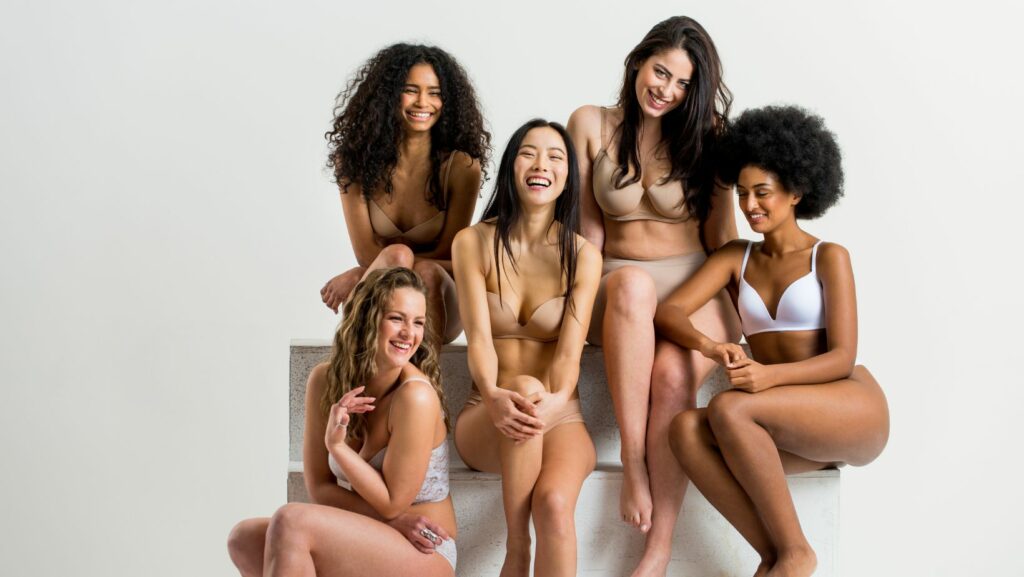The woman’s body is a marvel of nature, a complex and intricate masterpiece that has fascinated humanity for centuries. From its extraordinary ability to create life to its remarkable resilience and adaptability, the female form is a testament to the power and beauty of nature. Understanding the woman’s body goes beyond mere anatomy; it delves into the realms of culture, health, and empowerment.
By exploring the intricacies of the woman’s body, one gains insight into the broader narrative of women’s experiences and achievements. It’s a journey that celebrates the strength, grace, and complexity inherent in every woman’s physical being.
Woman:0f5jkvi69mo= Body

The woman’s body is an extraordinary structure, capable of various adaptive functions. Its hormonal system regulates cycles and fertility, showcasing complex interactions between the endocrine organs. Physical resilience is evident in its capacity for healing and recovery.
Beyond physiology, the woman’s body is a cultural and social emblem. Women often face societal pressure concerning beauty standards, yet the evolving discourse around body image promotes acceptance and individuality. Cultural perceptions further influence how woman’s bodies are seen and valued across different societies.
Biological factors play a significant role in health disparities. Awareness of specific health needs is crucial to address conditions like osteoporosis and breast cancer that disproportionately affect women. Empowering women to understand their bodies fosters better health outcomes.
The woman’s body symbolizes strength and grace. Its capability to nurture, adapt, and overcome challenges is celebrated, highlighting the vital role it plays in personal and societal contexts. As discussions continue, the focus remains on appreciating and understanding the woman’s body in its full complexity.
Anatomy of the Woman:0f5jkvi69mo= Body

The anatomy of the woman body features distinct structures and systems that contribute to its unique functions. Key elements include the reproductive system, encompassing the ovaries, fallopian tubes, and uterus. These organs play critical roles in ovulation and pregnancy, showcasing the body’s extraordinary life-giving abilities.
Hormonal regulation significantly impacts the woman:0f5jkvi69mo= body, primarily through the intricate interplay between estrogen and progesterone. These hormones influence the menstrual cycle and contribute to overall health and wellness.
The breast tissue is another notable aspect of the woman body, composed of glands and ducts essential for lactation and breastfeeding. It highlights the capacity for nurturing and adaptation.
Moreover, the skeletal structure showcases specific differences. Women’s bones are generally lighter and smaller than men’s, affecting physical attributes and strength dynamics. These unique features of the woman body emphasize its complexity, resilience, and pivotal role in human reproduction and endurance.
Health and Wellness Concerns

Health and wellness concerns are central in understanding woman:0f5jkvi69mo= body. Hormonal imbalances, such as those related to menstrual cycle changes, can significantly impact emotional and physical health. Women often face health issues like osteoporosis, a condition of weakened bones linked to lower estrogen levels. Regular check-ups can aid in early detection and management of these health and wellness concerns.
Heart disease is another major health and wellness concern, as it remains the leading cause of death among women. Recognizing symptoms unique to women, like nausea and fatigue, helps prompt timely medical attention. Awareness of breast health is crucial since breast cancer is a significant health and wellness concern affecting women’s lives. Encouraging self-examinations and regular mammograms ensures early intervention.
Lastly, mental health requires emphasis, with conditions like anxiety and depression being pervasive health and wellness concerns for women. Access to mental health resources and support networks is essential for maintaining overall well-being.
Societal Perceptions and Media Influence
Societal perceptions and media influence play crucial roles in shaping how woman:0f5jkvi69mo= body is viewed and valued. The ongoing dialogue around body positivity and diversity challenges outdated stereotypes, urging a shift towards embracing individuality and authenticity. Media representation continues to evolve, reflecting a broader spectrum of body types and promoting a more inclusive narrative.
By advocating for acceptance and understanding, society can dismantle unrealistic beauty standards that have long prevailed. Encouraging open conversations and education about women’s health and bodies fosters a more informed and supportive environment. As awareness grows, so does the potential for positive change in how women’s bodies are perceived and celebrated, paving the way for a more equitable and empowered future.
